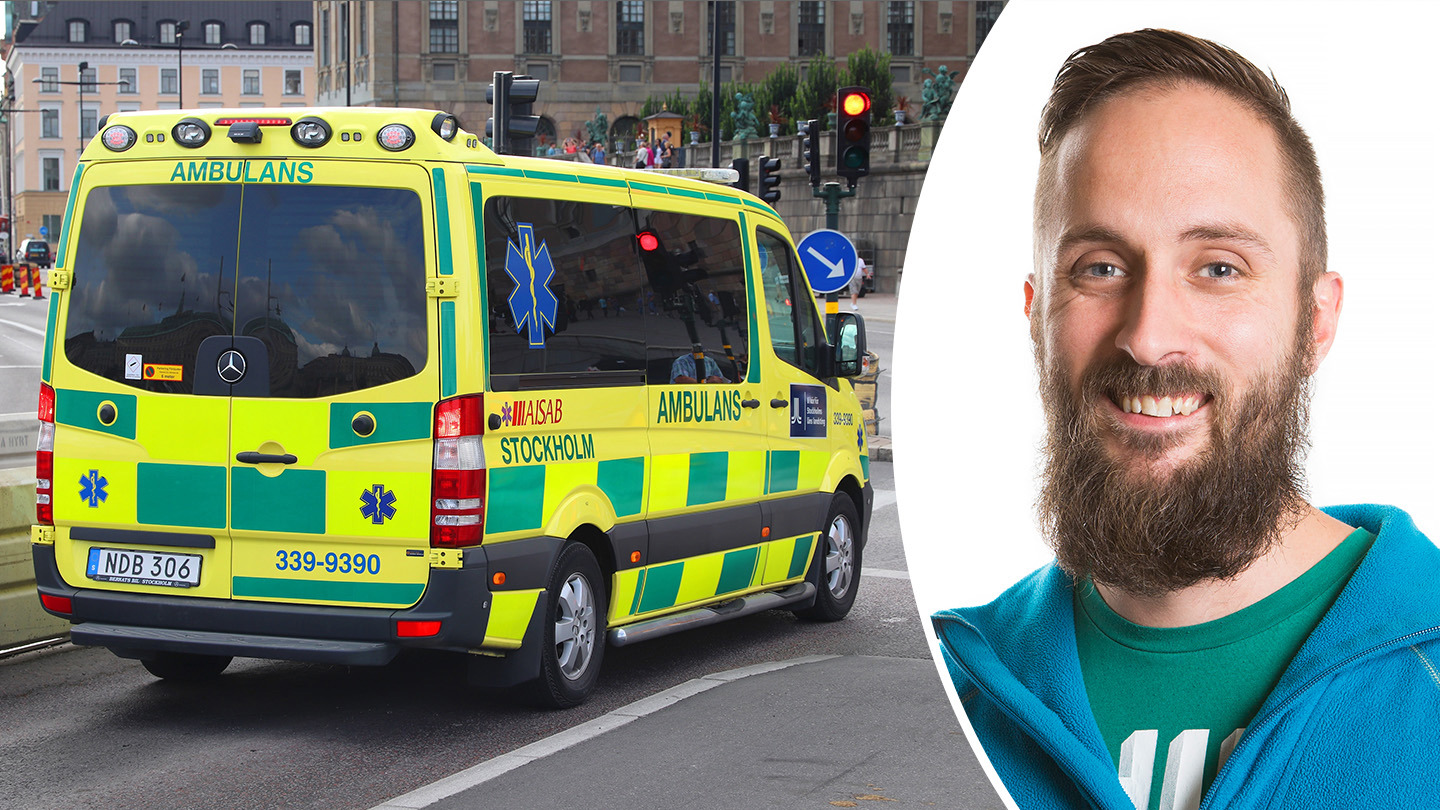Complex and vital: new thesis on ambulance clinicians’ clinical reasoning
2023-11-13

In the past, the ambulance had more of a transport function, usually only taking patients to the emergency room. Today, ambulance clinicians have to make sophisticated assessments and prioritisations of the patient's health status as well as choose the appropriate level of care. This may involve keeping the patient at home with self-care advice or taking the patient directly to an X-ray or surgery. The profession has thus become increasingly complex.
A strength of Ulf Andersson's doctoral thesis is that the assessment of ambulance clinicians has been studied in real time, in real and very different situations.
“There are other studies that look at specific diagnoses and then review the assessment retrospectively. When you look back at what you did, it is easy to make corrections, often unconsciously. Everyone will answer ‘yes’ to the question of whether they did a structured assessment," said Ulf Andersson, who defended his thesis on 10 November.
Similar to detective work
One of the clearest findings of his thesis is that the decision-making process is fragmentary and iterative, i.e. parts of the process are repeated and occur throughout the entire ambulance mission. The process extends beyond the direct patient encounter and includes logistics, safety, and administration.
“When you arrive at the scene, it is important to gather information from as many sources as possible. From the patient and the patient's family, of course, but also the environment. For example, are there open medicine packages in the house, or are there skid marks on the asphalt after a traffic accident? There are lots of signs that the ambulance staff interpret," said Ulf Andersson.
It sounds a bit like detective work, the way ambulance clinicians gather information to get a picture of the patient's situation. A key difference is that sometimes it has to be much faster. Other factors that influence decision-making include society's laws and regulations, organisational policies, safety at the scene, public expectations, the moral and ethical compass of the ambulance clinician and, last but not least, the wishes of the patient and family members.
Deficiencies lead to injuries
“This knowledge is important because we know from other research that mistakes in the decision-making process in healthcare causes harm in about 50% of the patient encounters, and that about 70% of these mistakes could be preventable. This in itself means increased suffering for patients and their families, but also increased costs for society as a whole," said Ulf Andersson.
Ulf Andersson's thesis includes four studies, including two field case-studies in which he and Birgitta Wireklint Sundström, Post Retirement Professor of Caring Science, followed eleven ambulance teams on assignment. In real time, researchers documented how ambulance clinicians conducted their clinical reasoning to make decisions. In some cases, they interviewed them retrospectively and followed up the patient records to see how the clinical reasoning was described there.
They also conducted interviews with unit managers, healthcare setting development staff, and other organisational representatives, who have given their perspective on how they see the conditions of the ambulance clinicians and their own conditions to support these processes.
Broadly speaking, the view of staff and organisational representatives is consistent. But there are conflicts:
“The organisation says that there are guidelines to ensure that care is as equal as possible, but at the same time it says that ambulance clinicians should make appropriate assessments based on their own experience. But ambulance clinicians themselves are concerned that if they circumvent the guidelines too much, they open themselves up to criticism and there is a fear of punishment. This is because the guidelines do not cover everything," said Ulf Andersson.
The thesis also includes a literature review, the first of its kind, and a study describing what ambulance clinicians need to achieve different levels of situation awareness. The latter study was based on survey responses from 30 experts in the field of ambulance care, including clinicians, educators in specialist nurse education for ambulance care, and researchers in pre-hospital emergency care.
How do you hope the results will be used?
“I hope that the thesis will be able to form the basis for further research in the area and contribute to a broader explanation of the complexity of decision-making for ambulance clinicians. I hope it can help to develop support for clinical decision-making.”
What happens next?
“I am going back to my clinical service as a specialist nurse at the ambulance organisation at Södra Älvsborg Hospital. I have my first night shift on Tuesday after my defence. I have applied to postdoc projects and have ideas for further research and collaborations. We will see what happens next; it is always exciting to have new experiences. I would like to combine clinical work with research.”
Ulf Andersson defended his doctoral thesis on 10 November with the thesis Clinical reasoning in the emergency medical services - An iterative and fragmented process involving the collaborative effort(s) of many
Lina Färm
Ida Danell (portrait), Adobe Stock (genre photo)

